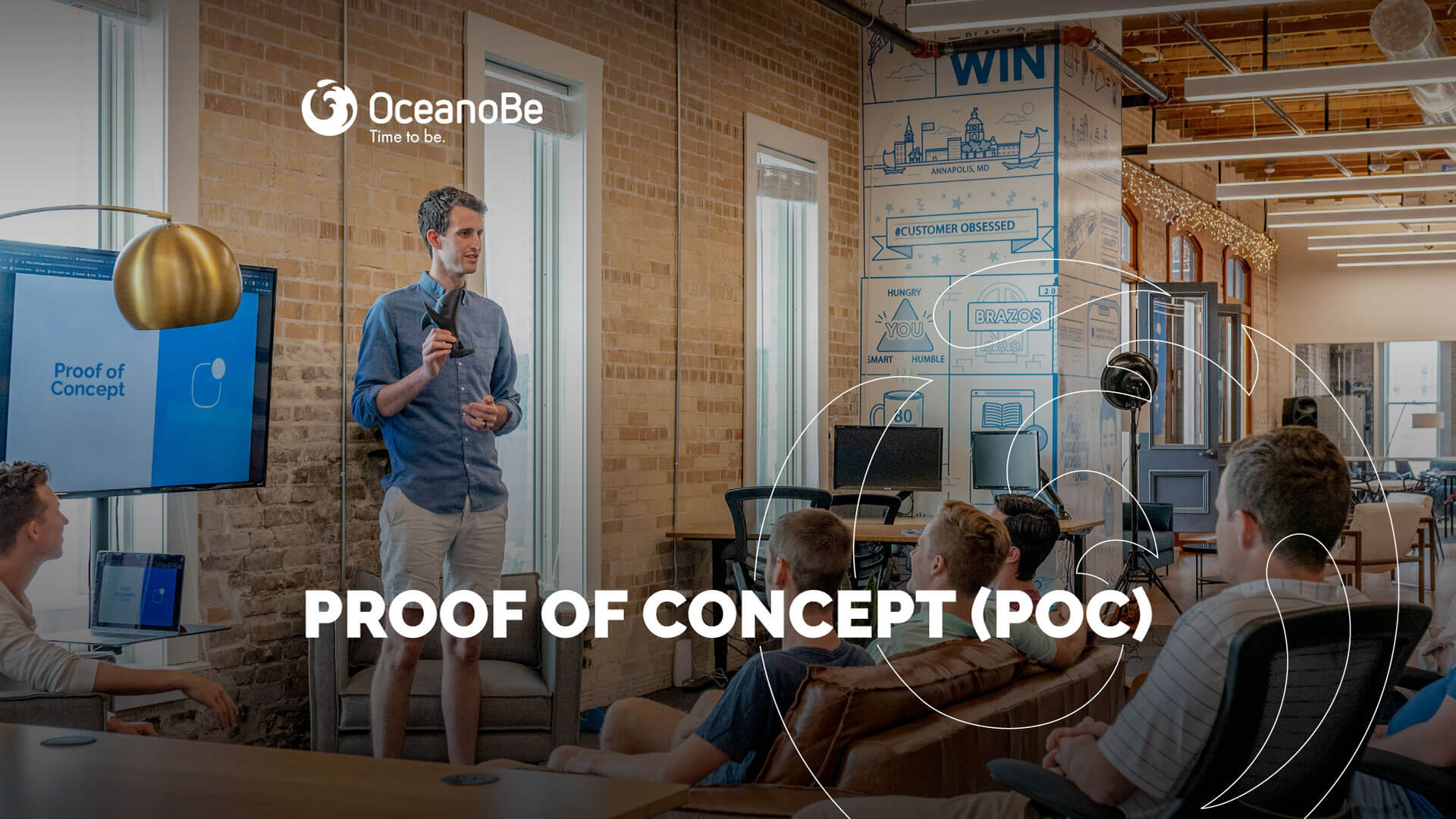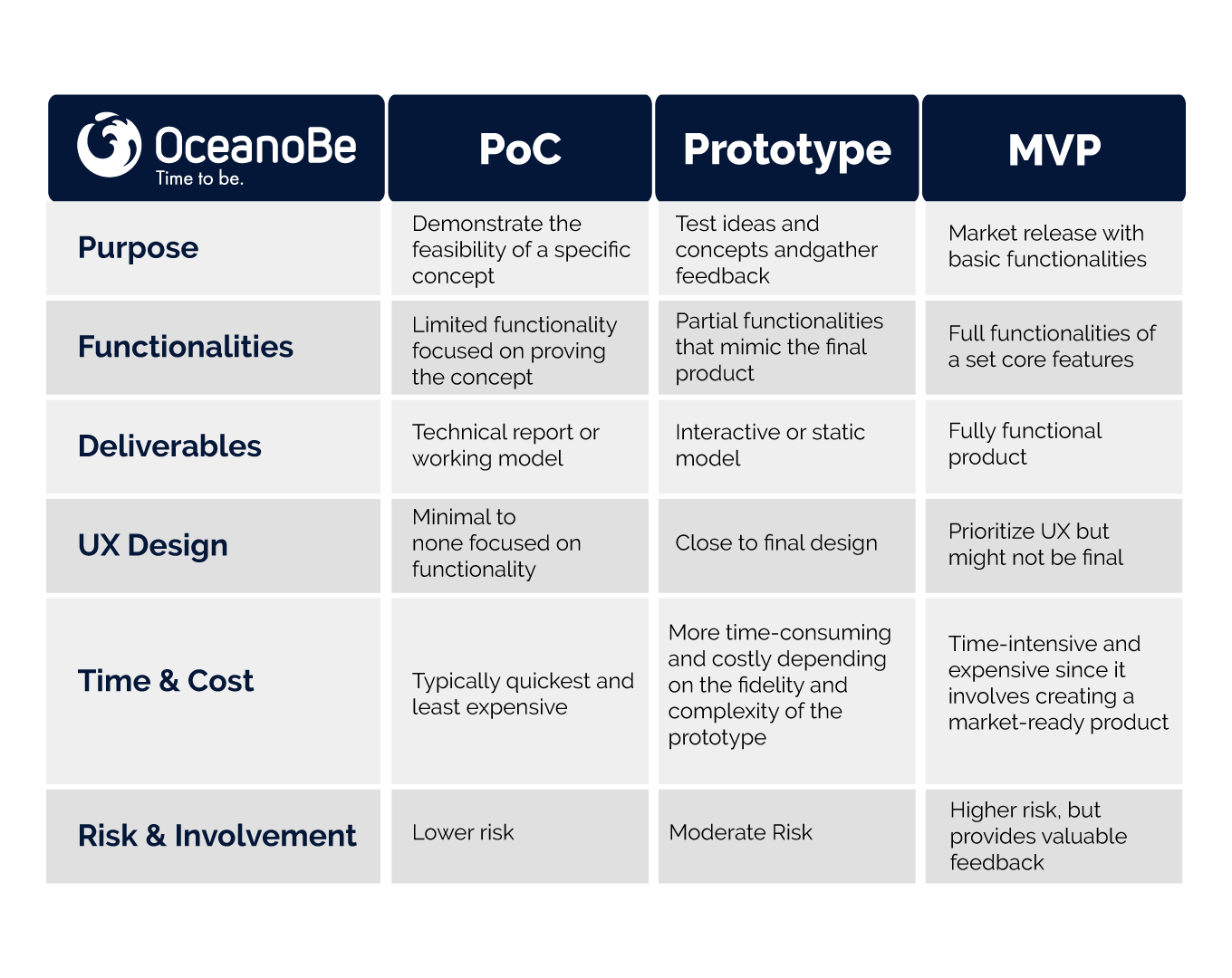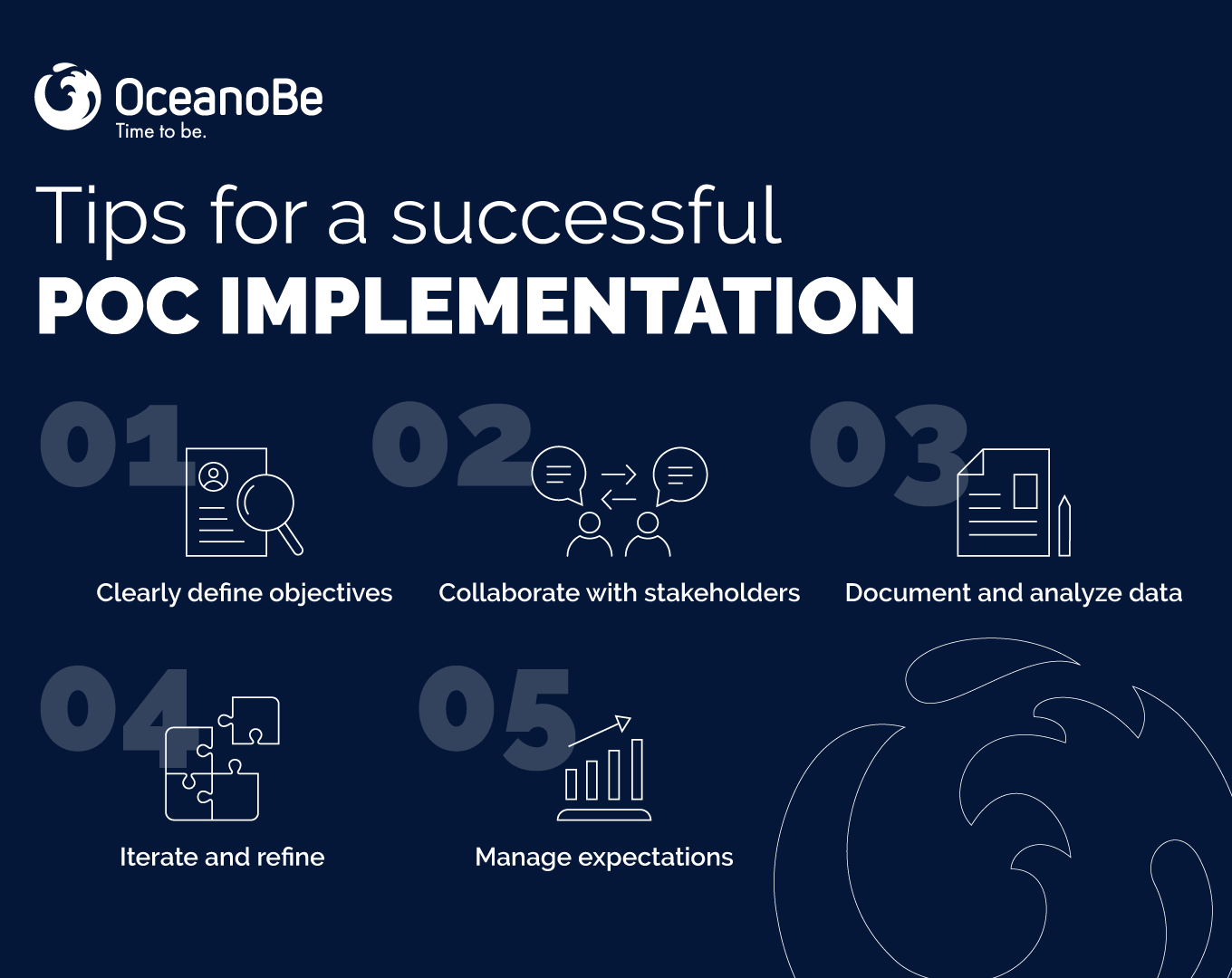The proof of concept (PoC) process for business growth
Introduction to proof of concept, benefits and key elements for a successful development
Introduction to proof of concept, benefits and key elements for a successful development

A step-by-step guide through PoC in software development
In the business world, ideas are plentiful, but not all ideas are worth pursuing. This is where the proof of concept (PoC) comes into play. A proof of concept is a process that allows businesses to test the viability of a concept or idea before fully investing resources into its development. It serves as a preliminary test to determine if an idea has the potential to be successful and profitable.
A proof of concept is essentially a small-scale demonstration or experiment showcasing an idea's core functionality and feasibility. It aims to answer critical questions such as "does the idea work?", "is it technically feasible?", and "is there a market demand for it?". By conducting a proof of concept, businesses can gain valuable insights and make informed decisions about whether to proceed with full-scale development or pivot their approach.
The proof of concept process is essential for business growth as it minimizes the risks associated with investing in untested ideas. By conducting a proof of concept, businesses can gather data and feedback, which helps in making strategic decisions. It allows businesses to validate their assumptions and ensure that the proposed solution aligns with the needs and expectations of their target market. Moreover, a successful proof of concept provides the confidence and credibility needed to attract investors, partners, and customers.
Conducting a proof of concept offers several benefits to businesses. Firstly, it helps identify potential flaws or limitations in the initial concept, allowing businesses to make necessary adjustments and improvements. Secondly, it provides an opportunity to test the technical feasibility and performance of the idea, ensuring that it can be implemented effectively. Additionally, a proof of concept allows businesses to gauge the market demand and potential profitability of their idea, enabling them to make informed decisions about its viability and scalability.
It is important to differentiate between a proof of concept, a prototype, and a minimum viable product (MVP). While these terms are often used interchangeably, they serve distinct purposes in the development process. A proof of concept focuses on validating the core idea or concept, testing its feasibility, and gathering initial feedback. A prototype, on the other hand, aims to create a tangible representation of the final product, showcasing its design and functionality. Finally, an MVP is a minimal version of the product that is released to the market to gather user feedback and validate the business model.

To ensure the success of a proof of concept, certain key elements should be considered. Firstly, a clear and well-defined objective is crucial. The objective should outline what the proof of concept aims to achieve and how it aligns with the broader business goals. Secondly, a target audience should be identified to gather relevant feedback and insights. The audience should represent the potential users or customers of the proposed solution. Additionally, a realistic timeline and budget should be established to ensure that the proof of concept remains feasible and manageable.
Developing a proof of concept can be divided into several steps to ensure a systematic approach.
In the context of software development, a proof of concept can be a valuable tool to validate ideas and technologies. Here is a step-by-step guide to developing a proof of concept in software development:
Keep in mind that the main goal of a PoC is to validate if a concept is feasible, so it's essential not to overextend resources or time. It should remain a relatively quick and cost-effective way to test an idea before diving into more in-depth phases like prototyping or MVP development.
While the proof of concept process can be highly beneficial, it is not without its challenges. One common challenge is the lack of resources, both financial and human, to execute the proof of concept effectively. Limited budgets and manpower can hinder the ability to conduct thorough research, develop prototypes, and gather sufficient data. Another challenge is the resistance to change within the organization. Implementing a proof of concept may require a shift in mindset and processes, which can be met with resistance from stakeholders. Additionally, ensuring the scalability and compatibility of the proof of concept with existing systems and infrastructure can be a challenge.
To ensure a successful proof of concept implementation, consider the following tips:

The proof of concept process is a valuable tool for businesses seeking growth and innovation. It allows businesses to test the viability of their ideas, gather feedback, and make informed decisions. Here at Oceanobe, we have successfully implemented many proof-of-concept ideas that were later transformed into successful MVPs and products. What we can say is that by conducting a proof of concept, businesses can minimize risks, identify potential flaws, and validate their assumptions. It serves as a stepping stone towards successful development and implementation. When implemented effectively, the proof of concept process can be a driving force behind business success and growth.